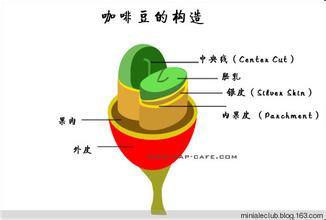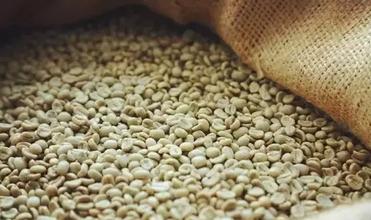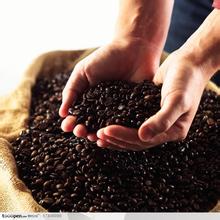Introduction to the steps of siphon pot brewing coffee with alcohol or gas
It was a Japanese coffee shop owner, Mr. Tanigata, who taught me how to make coffee. Tanigasu used to work at Enoteca Pinchiorri Restaurant in Tokyo (the main store in Florence, Italy, was won by Michelin 3-star, but Tokyo is no longer open), is a "full-stack chef" made from wine mixing, coffee making, Japanese food and western food (to borrow the definition of Manong). The Strawberry Caf é, which he and his wife run in Beijing, is located on the second floor of a secluded area inhabited by foreigners in Beijing. Before 8 p.m., the store sells the Japanese fruit tarts they made their name for, as well as the cloth rolls that have been popular in Beijing for the past two years. After 8 p.m., the foreign fruit shop has been transformed into a bar. I have only seen a Japanese customer store wine before, and this is the first time he has seen a siphon of coffee beans stored in his store. (siphon) is a physical phenomenon, which means that under certain conditions, liquid can be pumped without a pump. The name of the siphon pot comes from this phenomenon. Not only is the name "very physical", but the shape of the siphon pot is also full of scientific research. Unlike the futuristic, gigantic espresso machine (Espresso Machine) at Starbucks, the siphon pot gives you the impression that it looks into the future from Nikolai Tesla's time.
Japanese fruit shop, carved cafe sign, young waiter in vest, violin sound of Mark O'Connor, vintage filter, siphon coffee maker … That's what it feels like.

First of all, the difference between Japanese coffee and espresso lies in the machine and method of making coffee-espresso is espresso "stamped" with hot water at high temperature, while Japanese coffee is brewed coffee; "brewed" by hand, drip, siphon and so on. In practice, the former can be described as exquisite, while I can't find any other words except exquisite. In addition, anyone who recommends Japanese coffee will tell you that the taste of espresso is very different from that of brewed coffee. The former is rich and strong (the fat on the coffee is visible to the naked eye), while the latter is plain and delicate.
There is also an espresso machine in Guyusang's shop, but on the bar around the cuboid fish tank, all coffee drinkers have siphon pots in front of them. I asked Tanigasu, who strongly recommends Japanese style, whether the so-called difference between Japanese style and Italian style is just because people taste coffee from different angles (in fact, there are no advantages and disadvantages). He frowned and smiled, seemingly without a direct answer, but explained that (because of the language, I can only hire a shop assistant as an interpreter, there may be a deviation): anyway, Starbucks beans can only be used to make espresso, which will probably be exposed if you put them in a siphon pot.
Speaking of beans, I chose Colombia (P.S.), which has less acidity. After the beans are roasted, it is best to leave the beans for at least a week. If the color is uniform, the beans are good. Ideally, you should grind the beans before you start.), because you don't like the coffee with too much acidity, and according to Tani Sang, the coffee made from the siphon pot has distinct levels, sour is sour, bitter is bitter.
After choosing the beans, you will know the making tools. The siphon pot can be divided into three parts: a cylindrical upper pot for making coffee, a spherical lower pot for heating and receiving coffee (usually placed on a bracket), and finally an alcohol lamp or halogen lamp for heating (I use a more economical alcohol lamp today). In addition, you need a kettle to boil water, a cloth soaked in cold water, and a stick or spoon to stir coffee (I heard that the most fastidious Japanese barista will even make a special mixing stick the size of his hand out of bamboo).
Important Notice :
前街咖啡 FrontStreet Coffee has moved to new addredd:
FrontStreet Coffee Address: 315,Donghua East Road,GuangZhou
Tel:020 38364473
- Prev

How to watch the coarse dial of the bean grinder? -mazzer bean grinder adjustment video
How to see the coarse dial of the bean grinder? The adjustment of the video scale is just a reference. Different brands have different grinding scales. The performance of the same brand and the same model of the bean grinder is not exactly the same under the same scale. It is better to understand this way: the scale just tells you which direction is coarse and which direction is fine. When you find the powder thickness that suits you, the function of the scale is only
- Next

How to use the manual coffee machine to illustrate the detailed steps.-does the manual coffee machine drink directly?
Manual coffee machine how to use detailed steps diagram-hand coffee machine directly drink Moira pressure principle and use method is very simple: a hard plastic tube, a filter cover, a rubber sealing plug. The basic kit also includes a blender, a spoon and filter paper for a year, and a funnel to pour coffee powder into a plastic tube. Before we begin,
Related
- What is the Philharmonic pressure? How to use Philharmonic pressure to make delicious coffee
- Why does a hand grinder have more fine powder than an electric grinder?
- In addition to the hot mom, what is the difference between the versions of EK43 | ditting and Mahdi ek43?
- What kind of equipment do you need to make coffee by hand? Introduction to novice starter cooking equipment tools
- Espresso needs to be ground how thick and thin scale entry Italian Coffee Machine Bean Grinder investigation and Grinding course
- How much does it cost to open a small private cafe? How much does it cost to learn coffee? How to operate it?
- The difference between the flavor characteristics of hand-brewed coffee and coffee maker is hand-brewed coffee really better than coffee maker? Can I use a coffee machine to make coffee beans by hand?
- The difference between 01 and 02 of hario v60 filter cup what is the difference between 01 and 02 filter cup opening and cooking flavor
- What's the difference between the smart cup and the French kettle? Which is better, the French kettle or the Smart Cup?
- What's the difference between a smart cup and a V60 filter cup? The difference between the taste of smart cup and hand-brewed coffee

